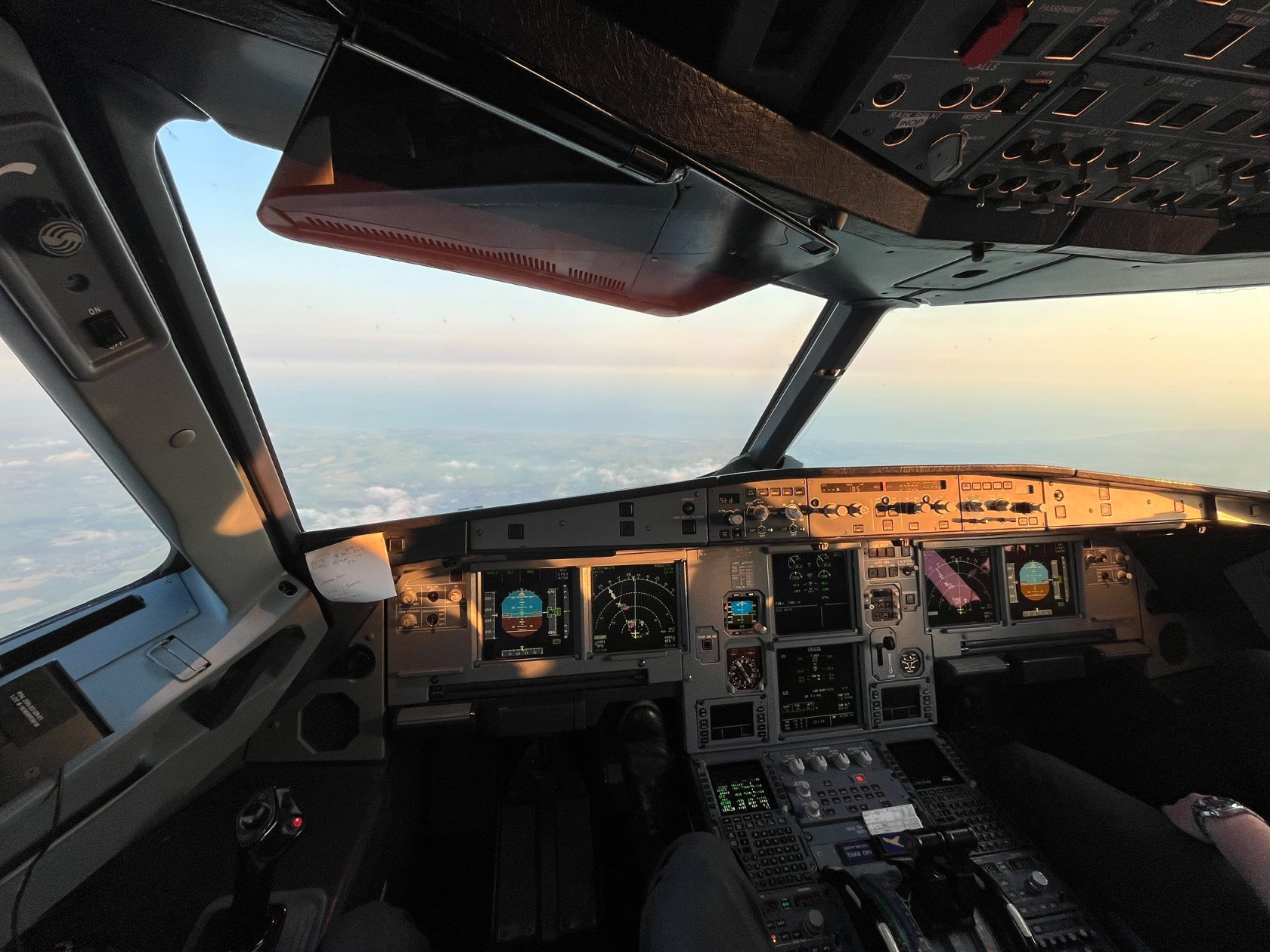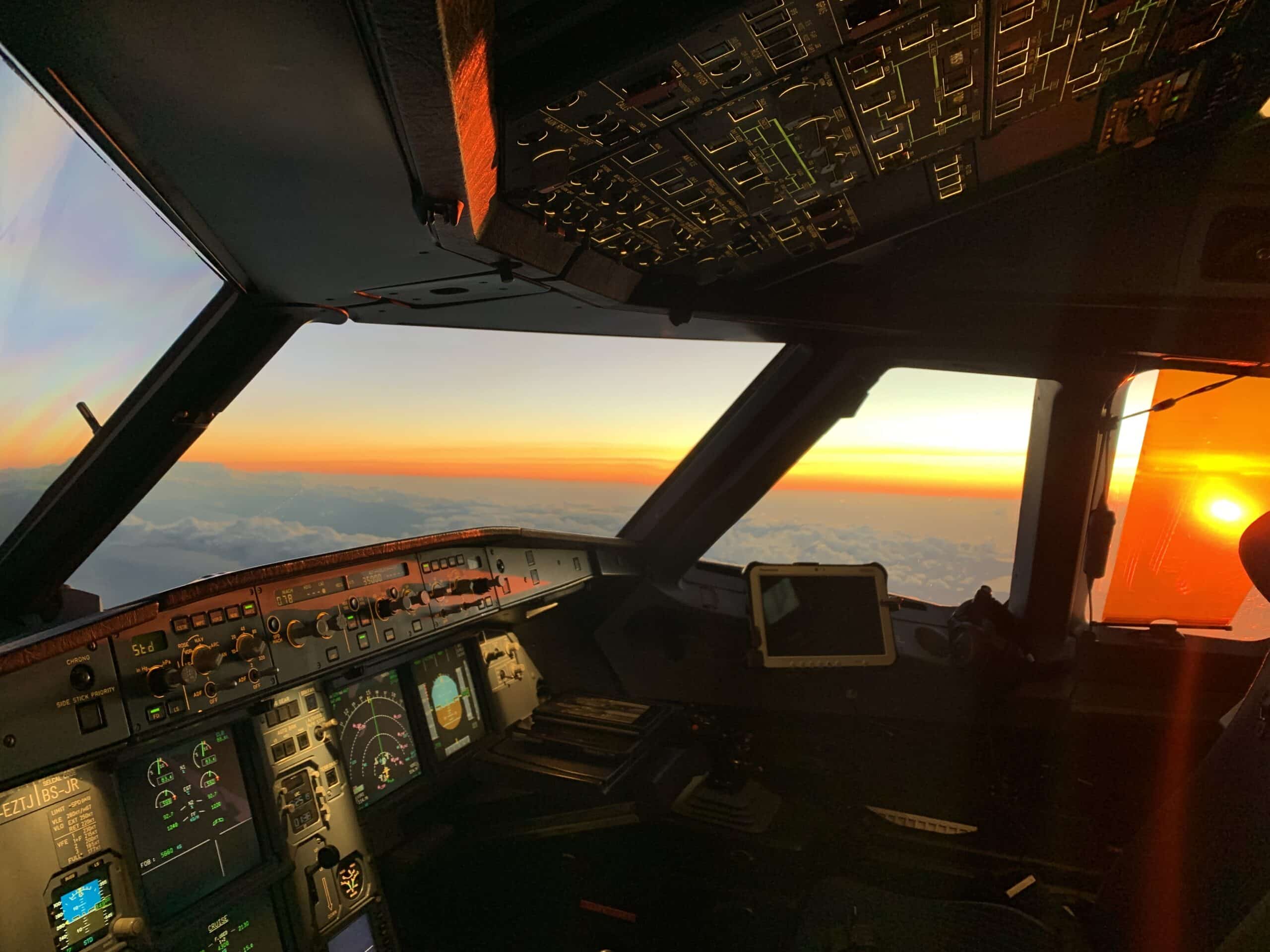Fatigue is a major issue in the airline world, especially prolific in the modern day short haul environment with its long duty days full of relentless challenges. This story is one that gives insight into the variety and number of challenges we can face in a day, along with the real dangers of airlines treating flight time limitations like targets to aim for in the name of cost efficiency, rather than maximums to steer well clear from.
It’s a Sunday morning and I’m jolted awake by the piercing sound of my phone ringing at 5am for what is going to be (unbeknown to me at this point) a whopping 16+ hour duty day. Much to my dismay I see ‘Crewing’ appear on the caller ID through my barely open eyes.
They’re calling me on my home standby duty and changing it to an airport standby with minimum report time. This essentially means they don’t need me for a flight yet but they want me to come and sit in the airport so I’m available at even shorter notice should I be required. How else would one want to spend a Sunday morning…
Within 10 minutes of the phone call I’m on the road and 90 minutes later I can be found setting up a makeshift bed on a sofa in the airport standby room in an effort to get a little more rest in. I notice a first officer across the room who has the same idea.
Unfortunately for both of us, a group of cabin crew have decided to start playing Jenga very loudly in the middle of the reasonably small standby room. The constant screaming, laughing and smashing of wooden blocks onto a table means there’s no way anyone can catch a little more shut eye. I notice the first officer is looking just as frustrated as I feel. We used to have two rooms for airport standby, one of which was a ‘quiet room’ usually full of knackered pilots catching up on sleep. In the name of cost cutting, our company did away with the quiet room so now we just have knackered pilots unable to sleep.
I give up trying to sleep and busy myself with some laptop work for the rest of the morning. At 2pm I start packing my bags to head home as I now just have a few minutes left of my standby duty. Just as I’m walking out the door, crewing call me to inform me that myself and the crew in the airport standby room have to operate a flight to Nice and back. I immediately query the fact that we’re essentially being called for a ‘late’ duty from what was an early standby, but I’m assured it’s just within our legal flight time limitations.
The real fun starts at the gate when we realise there’s 180 people waiting to board our aircraft which only has 150 seats…The passengers were meant to be flying on an A320 aircraft that had a tech issue, but it also had 30 more seats than the A319 we’ve now been allocated. I call operations to see if we can use a spare larger aircraft but there are none available. The gate staff are already aware of the issue and appear to be doing a great job of preventing chaos erupting, so I let them know we’ll go and start preparing the aircraft but if they need anything at all to come and grab me (often a PA by a pilot from the gate can help in situations like this).
Once on board, after 10 minutes struggling to download any flight plan to our ipads, a phone call to our planning team reveals that the entire flight planning system is down. They’re going to email flightplans to our ground team who will bring up a paper copy to the aircraft, but inform us they’re currently overloaded so this may take some time.
I’m already getting a bad feeling about this duty and call crewing again to let them know with the boarding issue & flightplan issue, it’s unlikely we’ll be leaving on time and therefore incredibly likely to infringe our maximum hours that day. Their response is that their system shows we’ll still be back within legal hours if we have a ‘good’ turnaround in Nice, and that there are no other pilots on standby so if we don’t operate then the flight will be cancelled (I’ve heard that line a few times before!).
Whether the crewing team intend to play on your emotional heartstrings with lines like this or not, it definitely does. The thought of this plane load of people not getting to their destination through no fault of their own isn’t one that sits well with me, especially if there’s something I can do about it. This has to be weighed up against the safety aspect of operating an airliner deep into the evening when the entire crew have been up since 5am. We agree to operate the flight. It takes much longer than usual to board due to the issues, but 45 minutes later we’re departing the airport.
The runway and type of approach in use at Nice airport changes 3 times during our flight, which massively increases our workload along with adding stress and uncertainty to the approach as we really weren’t sure which approach we’d by flying. As Nice can sometimes be a tricky arrival to fly as it contains a visual segment, I’d elected to fly the aircraft down there so it also meant a pretty long brief to the first officer as I had to run through a brief for multiple approaches onto different runways. In keeping with this trend, they then changes the approach again just as we were about to commence one, this time to one of the most complicated options. It was a type of approach that has only just got approval with my airline and whilst I’d flown this type of approach in the simulator, I’d never done it in real life so I was genuinely slightly nervous!
During the approach the aircraft flew itself round the final approach turn at low level over the beach and lined us up with the runway centreline. It’s only at around 500ft that I then take the autopilot out, by which point most of the hard work is done.
As we taxi to stand me and the first officer have a laugh about what a strange job we have; one minute we’re sat on a sofa in London about to go home, just a few hours later we’re taxiing a multi-million pound aircraft round the tarmac in the south of France!
Things are rushed on the turnaround as we want to get back within our legal hours. Whilst me and the First Officer battle with the flightplan issue (system is still down), I can hear commotion in the cabin.
Despite me having messaged Nice on the flight down asking them not to let more than 150 people through the boarding gate….the gate staff let 156 people through the gate and onto the aircraft for our flight home during the turnaround.
We now have 6 very confused looking passengers standing in the aircraft isle on a plane that’s totally full. Let the fun begin once again….
One of these passengers is clearly pregnant (well I hope so anyway!). Another has clocked what’s going on and is standing in the entrance to the flightdeck shaking in tears claiming he needs to get to London on this flight. I assure them all that I’ll do what I can. A quick phone call to operations and I receive authority to offer money to any passengers who would be willing to swap onto the later flight. We get a few kind and now slightly wealthier volunteers so the cabin situation is sorted.
Unfortunately, by the time everything is settled and we’re ready to go, we’ve missed our ATC slot. In order to get back to London, I must now exercise my discretion to extend past our maximum amount of duty hours. The options are either refuse discretion which would mean getting everyone to de-board the aircraft & we spend the night in Nice, or we agree to go into discretion in an effort to get everyone back to London. After a quick chat with the crew to see how they’re feeling, we opt for the latter. We depart around 30 minutes later.
As we settle into the flight the cockpit door buzzer goes. I turn around expecting it to be our dinner, but instead we get one of our cabin crew in tears sent through the door. She’s in such a state that she can’t even get words out. We’re already at cruise altitude and the first officer is pilot flying so I immediately ask him to take the radio too. I turn my loudspeaker up so I can still hear but take my headset off so I can turn some of my attention to this very upset looking girl. I pull the jump seat out for her and encourage her to sit down and talk about what’s going on.
Her initial story was that a passenger had been rude to her by littering crumbs and then making her clear them up off the floor (honestly this type of behaviour from passengers doesn’t surprise me anymore, respect and courtesy seems to often get left on the jet bridge), when I dug a little deeper it turned out that was just the straw that broke the camel’s back.
She’d actually been arguing with her boyfriend that day and he’d just texted her on the turnround down in Nice to inform her she’d been dumped. Classy guy! I really feel sorry for this girl and spend all the time I can hearing her out and reassuring her. The flightdeck can often feel like a therapy box despite this side of the job being one that we are given no training for.
I told her not to take the passenger incident personally, the passengers are frustrated at the company not her. I also told her to consider a new boyfriend that won’t dump a girl over text whilst she’s at work! I let her chill in the flightdeck with us for the remainder of the cruise to prevent any further upset in the cabin.
Descending back into London myself and the first officer are now exhausted. It’s dark outside and we’ve technically been on duty for coming up to 16 hours. It’s during this descent that we get a stark reminder about the real dangers of operating beyond those legal hours set out by the aviation authorities. It’s a busy descent through London TMA and on top of this, our landing runway in London gets swapped around just as we are about to make our approach which again significantly increases our workload.
Shortly after being cleared for our final descent, we get a very loud ‘traffic, traffic’ warning from our aircrafts TCAS system (Traffic Collision and Avoidance System) that startles both of us. Simultaneously ATC urgently order us to climb immediately. We can now see an aircraft on our navigation display rapidly climbing towards us from below as we are descending into its path. The first officer still seems startled, so I direct him to push the button that immediately levels the aircraft, and then pull the knob to start the aircraft climbing. I monitor his actions and then let ATC know we’re climbing once I’m happy the aircraft is on a safe trajectory.
It wasn’t immediately clear how we’d ended up trying to share the same small piece of airspace with another airliner at the same time, and once we landed both ourselves and ATC filed a report on this incident so it could be investigated properly. It turns out you could see the ‘Swiss Cheese’ model at work here. The investigation concluded ATC had used an amalgamation of our callsign and that of another aircrafts when giving a descent clearance that was meant for the other plane. They’d used our company prefix followed by a callsign that sounded similar to ours, despite the intended aircraft being from a different company.
This descent clearance call came at the exact time we’d expect it for our own descent based on the runway we were initially meant to be landing on (which had again changed making it our 5th approach change of the day). Had we not been at the latter end of an extremely long & challenging day, one of us may have picked up the callsign was slightly wrong or now came at a time we weren’t expecting due to the change of approach. Due to a combination of the above two factors, along with what was very likely the onset of fatigue from such a demanding duty day, both myself and the FO believed the clearance was for us and neither of us clocked that the full callsign wasn’t ours. I read back this clearance and the first officer started the descent. ATC didn’t pick up the fact the clearance was readback by us and not the intended aircraft. Thankfully both ourselves & ATC have equipment to alert us when two planes get too close, but it’s still a stomach dropping feeling knowing you essentially started a descent towards another aircrafts path regardless of the reasons.
It’s a chilling reminder of the importance of these maximum legal flying hours and how airlines really need to take care not to push their crew beyond these limits especially given the number and complexity of issues that crews face on a daily basis during these duties.
I got back into my car that day 16 hours after my phone initially rang, and walked through my front door at 10pm having been on the road since 5am. Time to try and sleep & be ready for the next duty.
Share post with a friend:









